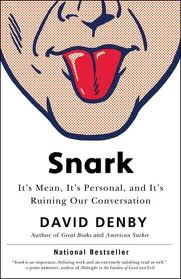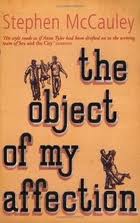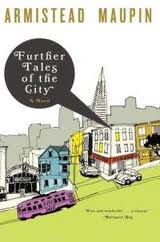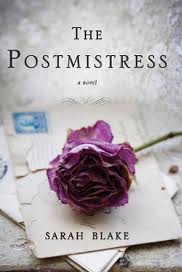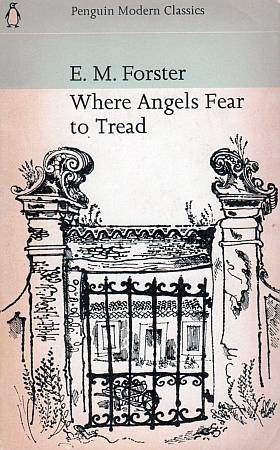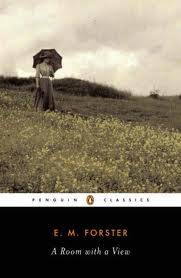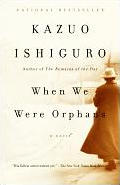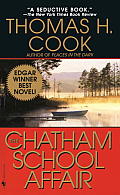 “She still breathed in what air there was and ate the little she could scrounge, though mostly for something to do. It was more that she no longer thought of herself as truly living, or as having anything left in the world to lose. Everyone she’d ever loved had left her, and always through her own fault.” (366)
“She still breathed in what air there was and ate the little she could scrounge, though mostly for something to do. It was more that she no longer thought of herself as truly living, or as having anything left in the world to lose. Everyone she’d ever loved had left her, and always through her own fault.” (366)
Slammerkin* is a novel based on a real case of a girl, Mary Saunders, who was a servant in the employment of one Mrs. Jones in 18th century England. Emma Donoghue has drawn from the meager and disputed surviving facts Mary’s life and has chosen for her a very base trade, prostitution, for the three years of her life prior to service with the Jones. Her service at the household led to very shocking consequences that doomed her. In 1760, thirteen-year-old Mary Saunders was privileged to have attended school, for most of the girls at her age would have taken up apprenticeship in handicraft.
Being raised in a working-class family teetering on poverty constantly reminded her that she was a social disadvantage—a victim of her historical moment in which a girl was no more than an useless mouth to feed. When her step-father falsely accused her of pinching money with which she was to purchase meal for the family, her mother did not believe that the coins had slipped out of her frayed pocket. Embittered, out of protest she could have refused the last morsel of crust offered to her after the humiliation, but she was too hungry for dignity. Dignity.
Strolling the rabbit warrens of the Dials in London, Mary offered to be kissed by an old peddler and let his hands roam all over her skirts in exchange for linen, lace, and a shiny red ribbon that she she lusted for. Kicked out of the house she was taken in by Doll Higgins, who led her into a life of prostitution. Later on at Magdelen Hospital, where she sought refuge from the brutally cold weather and recovered from a nagging cough, the question of choosing confronted during a sermon that rehabilitated the girls to penitence. Is prostitution her own choosing? Has she chosen to kiss the peddler in exchange for the ribbon? True, she had chosen the circumstances, but had no say of her fate. She knew she deserved more than what domestic chores that confined the young women of her time. Her ambition, plagued by vague dreams of a better life, has destined her to this path.
Mary’s downfall began after less than month in the Jones’s house when she felt she had rented out her whole life to the family in advance. Service for which she had no talent reduced her to a puppet that had to obey the orders at someone else’s whim. Under the tutelage of her mistress, who treated her as a daughter, Mary became the deftest seamstress and embroider. The inner calling to the liberty and hustle-bustle of London streets overwhelmed her and, when she began whoring for the customers of the reverend, who pimped for her at the tavern, she forfeited the last chance of redemption. She rejected the new family and broke off engagement to a manservant. Her life was folded over like a hem—there was a day side and a night (dark) side—and she wasn’t sure which Mary was the real one.
Mary Saunders’s scope on freedom transmuted to the life of Abi, the African slave from Barbados. The central role in Abi was a big slap on the uncivil, stratified society that stripped people of their basic human right and dignity. But it crushed Abi’s spirit to realize that even a bold Londoner with high ambitions like Mary was not set free. In a sense, Mary’s being a prostitute who sold her body to the young, the old, the civil, and the boorish of her own choosing to achieve her goal in life was no more poignant than being a slave.
*Slammerkin n. (18th century, of unknown origin) 1 a loose gown 2 a loose woman
Filed under: Books, Literature, Reading | Tagged: Books, Emma Donoghue, Historical Fiction, Literature, Reading, Slammerkin | 13 Comments »
 The most bizarre thing happened to me at Aardvark Books on Church Street yesterday. I walked into the mildew-smelling neighborhood used-book joint to see if I can find Rebecca West (Birds Fall Down) and several books on my list. Customers were sparse on Saturday morning and the store was very quiet and easy for browsing. Round the corner of the fiction rack came the resident cat, a golden tabby, who walked so slowly in front of me. I minded my own business. He paused, looked back and started meowing and grunting. The tabby suspiciously walked on but constantly stopped, turned his head and threw a glance at me. Before I could make head to tail of his hissing and growling, the cat jumped at me and landed his sharp claws on my left thigh! Not only that he had no intention to let go of my thigh, he also sank his claws deeper into my jeans. For a small-sized animal the tabby was quite strong and aggressive. I tried to shove him away without further provoking him. Back down on the ground he was standing about five feet from me, the tail arched and bristled. Then he darted away as if he pretended the assault never took place. On the way out I told the owner about the tabby’s perpetration but the tabby was holding me a sharp glare on the register counter. Tail straight up and fully bristled. What have I done? It was the weirdest encounter with cat. After this rift with the tabby I can say for sure that I’m a dog person.
The most bizarre thing happened to me at Aardvark Books on Church Street yesterday. I walked into the mildew-smelling neighborhood used-book joint to see if I can find Rebecca West (Birds Fall Down) and several books on my list. Customers were sparse on Saturday morning and the store was very quiet and easy for browsing. Round the corner of the fiction rack came the resident cat, a golden tabby, who walked so slowly in front of me. I minded my own business. He paused, looked back and started meowing and grunting. The tabby suspiciously walked on but constantly stopped, turned his head and threw a glance at me. Before I could make head to tail of his hissing and growling, the cat jumped at me and landed his sharp claws on my left thigh! Not only that he had no intention to let go of my thigh, he also sank his claws deeper into my jeans. For a small-sized animal the tabby was quite strong and aggressive. I tried to shove him away without further provoking him. Back down on the ground he was standing about five feet from me, the tail arched and bristled. Then he darted away as if he pretended the assault never took place. On the way out I told the owner about the tabby’s perpetration but the tabby was holding me a sharp glare on the register counter. Tail straight up and fully bristled. What have I done? It was the weirdest encounter with cat. After this rift with the tabby I can say for sure that I’m a dog person.




